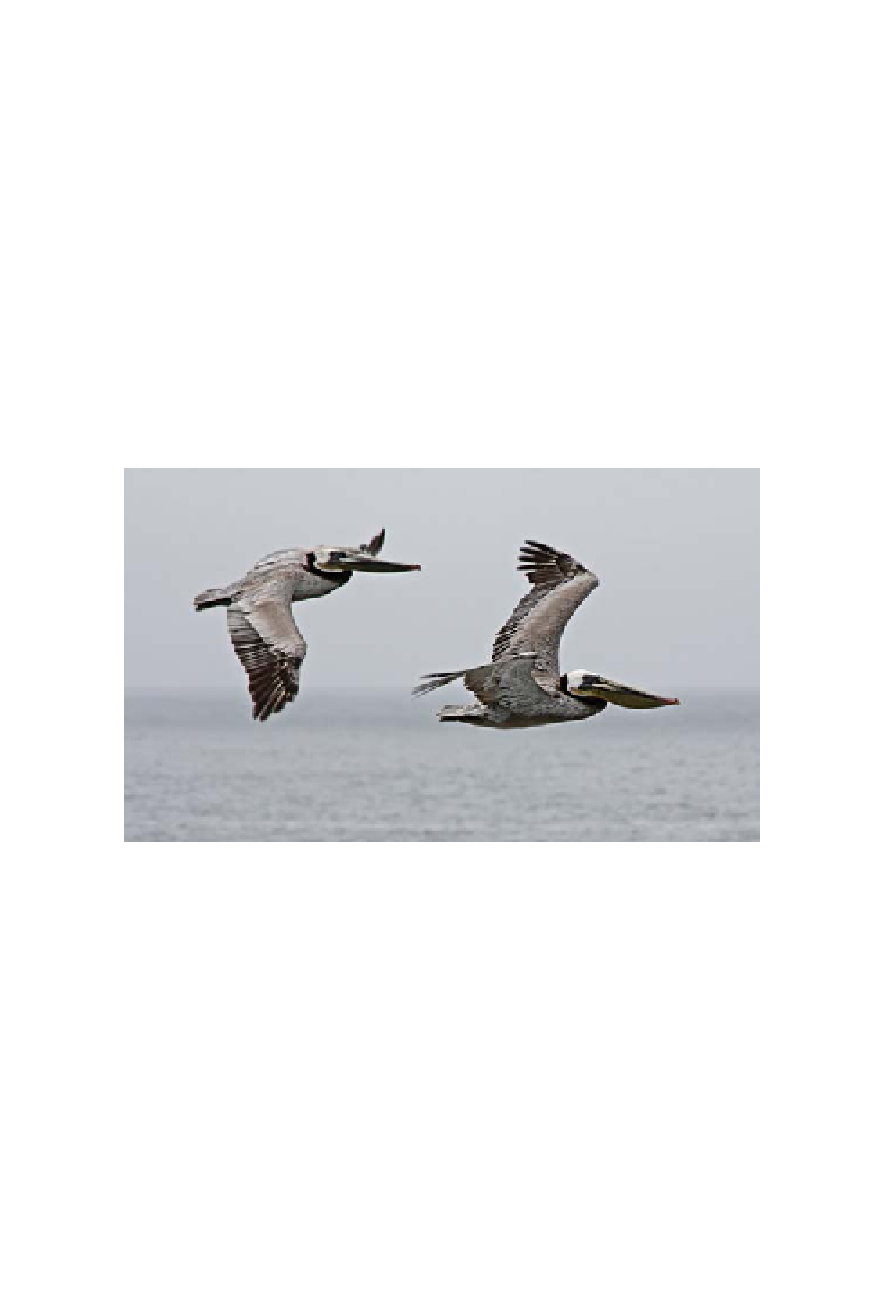Biology Reference
In-Depth Information
THE OTHER DAY
at dusk I took a walk along San Francisco's Aquatic Park,
where the shape of the shore still follows an original cove. Though humans
have added piers and breakwaters and a city to the scene, on this evening
the activities of people and wildlife blend in the abalone light.
It's an El Niño year, rich in fish food. At this time of day, when the tides
are turning, the slack water is so full of sardines and mackerel that fishers
have abandoned their rods to dip hoop nets into the water.
A group of sea lions is swimming so close together that each animal
looks like it is riding another's back. They chase the fish around the cove.
About 20 feet ahead of the lead sea lion hovers a gyre of pelicans. It's al-
most as if the big birds in the air and the big mammals in the water are
working together to make the most of the fish.
Soaring single file through coastal skies like modern pterodactyls, California Brown
Pelicans are rebounding from decades of pesticide poisoning. DDT bans and habi-
tat conservation have helped. In November 2009, officials removed the Brown Peli-
can from the endangered species list. (Max Eissler)
A bystander mentions seeing more sea lions in the bay and more peli-
cans along the shore this year than in decades. In the air, the brown birds
flap their great wings in slow motion—gliding on an updraft, flapping
downwind. When they spot the silver backs of fish, they back flap for an
awkward moment, choosing their mark. Then they pin back their wings
and drop like daggers, their splashes wetting thin air.
Along the shore, cyclists weave through tourists trying to capture a
West Coast sunset in the chip of a cell phone. In the water, two white-
capped swimmers match laps from buoy to buoy, while a third powers
back-and-forth in between. The pelicans dive in and out of the water all
around them, but neither humans nor birds ever collide.

